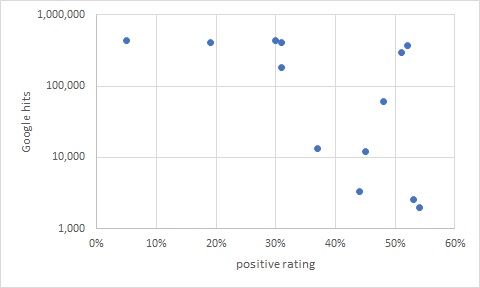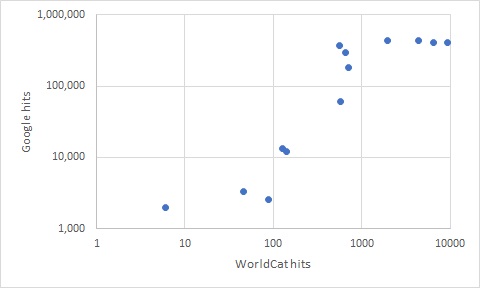
| Reverent Entertainment → Ecclesiastes 9:11 → A short rating of Longfellow |
I returned, and saw under the sun, that the race is not to the swift, nor the battle to the strong, neither yet bread to the wise, nor yet riches to men of understanding, nor yet favour to men of skill; but time and chance happeneth to them all.
Ecclesiastes
9:11
In 1920s I.A. Richards, a lecturer in English and Moral Sciences at Cambridge, did a striking experiment. He gave his students, most of which were English majors with a view to an Honours Degree, a set of poems and asked to judge their worth. The trick was that he withdrew the names of the poets. Richards published the shameful results of his study in the 1929 book Practical Criticism.
Henry Wadsworth Longfellow got only a 5% approval rating. Here is what Cambridge students thought of his work:
This one seems to me a successful communication of an experience whose value is dubious or which at most is valuable only on a small scale. ... It does, in fact, seem to me rather trite
The theme is commonplace and the poet has failed to give it new significance by his treatment.
This poem is rubbish.
...this poem seems very muddled and confused.
The poem leaves the reader as it found him.
This poem is a bastard of spurious rectitude and false simplicity—or, if you prefer, was gotten by a small Squire on some cretinous evangelical ninny.
From the rythm of this poem I deduce that it was written in a state of semi-somnolence by a man with St. Vitus's dance.
The rythm is very poor.
...the banality of the wording is ludicruous, reminiscent of an elderly maiden lady shaking a mittened hand in remonstration...
This "poem" is a storm brewed amongst sodden Typhoo-tips ... by an incorrigible moral charlat, simpleton, or bore...
| Poet | Poem | Positive | Negative | Neutral | WorldCat hits | Google hits |
|---|---|---|---|---|---|---|
| Philip James Bailey | Festus | 45% | 37% | 18% | 139 | 12,000 |
| Christina Georgina Rossetti | Spring quiet | 51% | 43% | 6% | 656 | 298,000 |
| John Donne | Holy Sonnets VII | 30% | 42% | 28% | 1,932 | 440,000 |
| G.A. Studdert Kennedy | More Rough Rhymes of a Padre | 53% | 42% | 5% | 87 | 2,540 |
| Edna St Vincent Millay | The Harp-Weaver | 52% | 35% | 13% | 559 | 373,000 |
| Gerard Manley Hopkins | Spring and Fall | 31% | 59% | 10% | 709 | 181,000 |
| J D C Pellow | The Temple | 54% | 31% | 15% | 6 | 2,010 |
| D H Lawrence | Piano | 19% | 66% | 15% | 9,284 | 404,000 |
| Alfred Noyes | For the Eighties Birthday of George Meredith | 48% | 41% | 11% | 581 | 60,400 |
| G H Luce | Untitled | 37% | 36% | 27% | 126 | 13,300 |
| Thomas Hardy | George Meredith | 31% | 42% | 27% | 6,511 | 413,000 |
| Wilfred Rowland Childe | Ivory Palaces | 44% | 33% | 23% | 46 | 3,330 |
| Henry Wadsworth Longfellow | In the Churchyard in Cambridge | 5% | 92% | 3% | 4,368 | 436,000 |
The table above shows the portions of positive, negative and neutral judgements for all thirteen poems used by Richards in his experiment. I have added two additional columns. One shows the numbers of different books by the poets found using WordCat in libraries worldwide. Another shows the number of webpages mentioning each poet found using Google. I used full poet's name as an exact phrase plus a separate word "poet" in Google searches. The numbers of WordCat and Google hits are two measures of poet's fame which we can compare with ratings of their poems by Cambridge students.

The figure above shows fame, measured as the number of Google hits, versus the part of positive judgments in Richards' study. You can see the trend that the fame decreases as the rating increases. Mathematicians measure such trends using a correlation coefficient. It is a number ranging between -1 and 1, where 1 means perfect correlation, -1 — perfect anticorrelation an 0 — no correlation at all. This correlation coefficient for fame and rating is -0.61 . One finding of the mathematical theory of fame is that the logarithm of fame is a more useful number. The correlaton coefficient between the rating and the logarithm of Google hits is -0.57. A plot of the rating versus another measure of fame, the number of WorldCat hits, is very similar so there is no need to add it. In this case correlation coefficient between the rating and fame is -0.71 and the one between the rating and the logarithm of fame is -0.72. In contrast the correlation between the two different measures of fame (see the figure below) is highly positive. The coefficient for the bare numbers is 0.69 and for the logarithms is 0.91.

Why the worst rated poets are the most famous? The quote from my favorite writer Charles Dickens may give a clue:
Some medical beast had revived Tar—water in those days as a fine medicine, and Mrs. Joe always kept a supply of it in the cupboard; having a belief in its virtues correspondent to its nastiness.
Perhaps, some literary beasts believe that nasty poems benefit souls?
One can object that the poems used by Richards do not represent the poets. If he used the most famous poems of the famous poets the students would recognize them and would know the author. Since the aim of the study was to get blind ratings, Richards must have avoided the most famous poems. However at the very least the results of the study show that some of the poems of unknown poets are much higher rated than some of the poems of famous poets. Another argument which Richards himself used is that the students did not understand the poems. However, if Camridge English majors aiming for a Honours degree do not understand the poems then who does?
In the related study I found that people can't tell the prose of Charles Dickens from the prose of widely mocked for bad writing novelist Edward Bulwer-Lytton. In a series of experiments publishers rejected literary classics submitted as works of unknown authors. Back in 1877 a rejected poet James Whitcomb Riley passed one of his poems as a newly discovered work of Edgar Allan Poe. The poem was, of course, published and declared a masterpiece. The editors could not tell the poet, whom they had rejected, from Poe. You can take this quiz to see if you can.
Mikhail Simkin
April 22, 2017